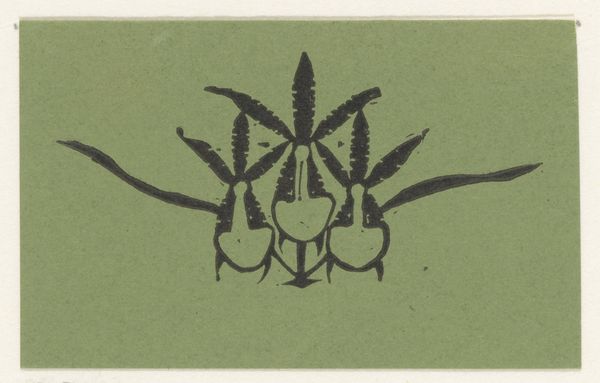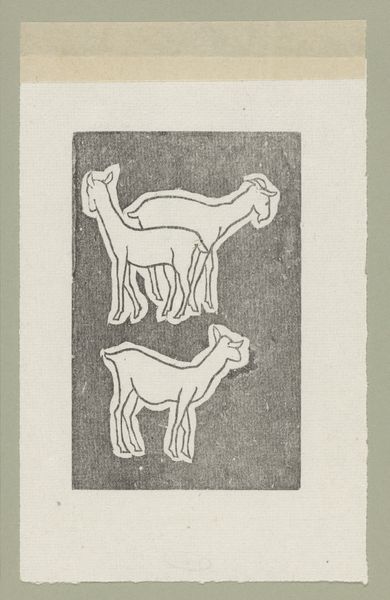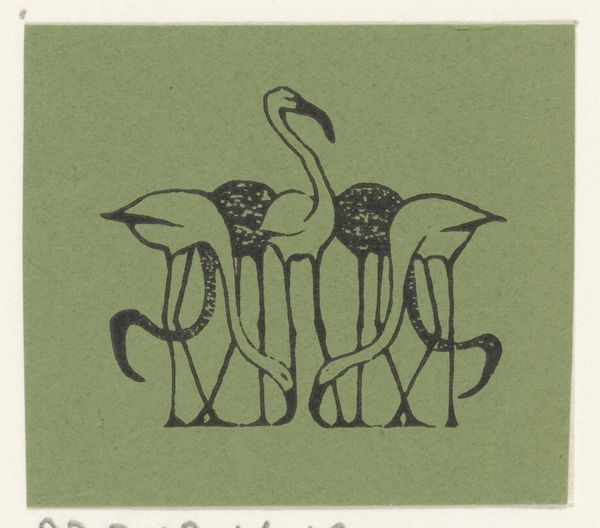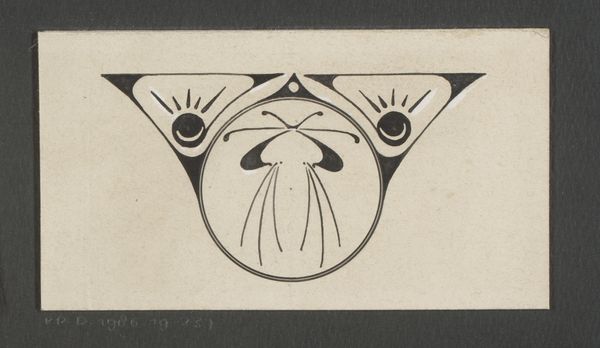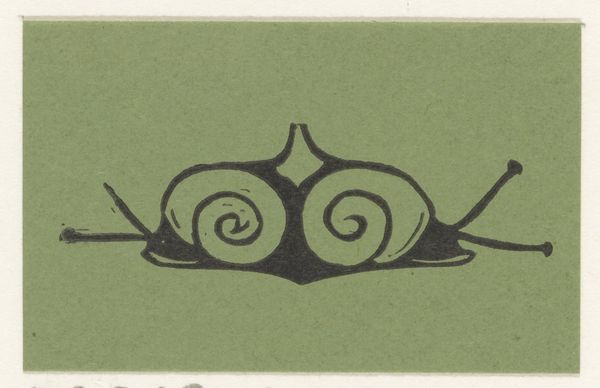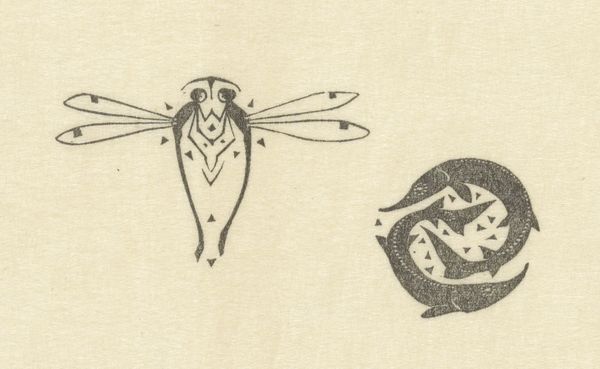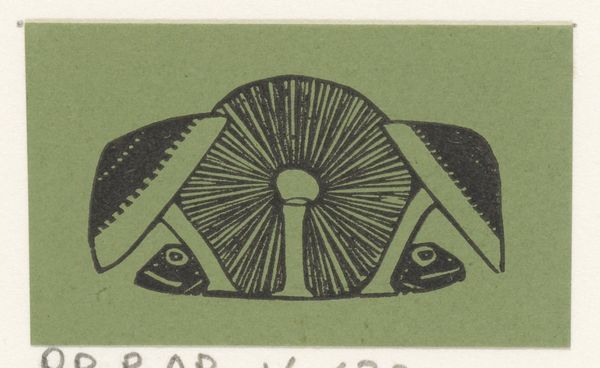
print, woodcut
#
animal
# print
#
form
#
geometric
#
woodcut
#
line
#
symbolism
Dimensions: height 56 mm, width 50 mm
Copyright: Rijks Museum: Open Domain
Editor: This woodcut print, titled "Vignet met twee antilopen," by Gerrit Willem Dijsselhof from 1892, strikes me with its flat geometric design, almost like a logo. What stands out to you? Curator: What strikes me is how Dijsselhof utilizes symbolism and simplification in a way that moves away from traditional representation. Think about the late 19th century—the rise of the Art Nouveau movement. This piece resonates with the growing interest in stylized, decorative arts and reflects a broader societal shift. The print could almost be interpreted as a challenge to the established academic art institutions of the time. How do you view this move towards abstraction within that context? Editor: I hadn’t considered it that way. I suppose the print challenges conventions through its pared-down form and focus on line rather than detail, a rejection of the highly detailed, academic styles that were then dominant in the art world. What impact did these prints have outside of the traditional gallery space? Curator: Excellent point. The accessibility and affordability of prints meant that art could infiltrate daily life. These designs often appeared in books, textiles, and decorative objects, subtly reshaping aesthetic tastes across a wider public. Think about William Morris and his socialist ideals applied to design. How does Dijsselhof’s print speak to that democratization of art, would you say? Editor: So, instead of being confined to elite circles, the antelopes were democratized! I see that this work, far from being "just a pretty image," acts as a sign of its changing times. Thanks! Curator: Indeed! Recognizing art's potential influence on society broadens our appreciation for Dijsselhof’s elegant vignette. It becomes a sign, of the shift in societal taste and accessibility of artwork that might’ve only existed within certain circles.
Comments
No comments
Be the first to comment and join the conversation on the ultimate creative platform.

